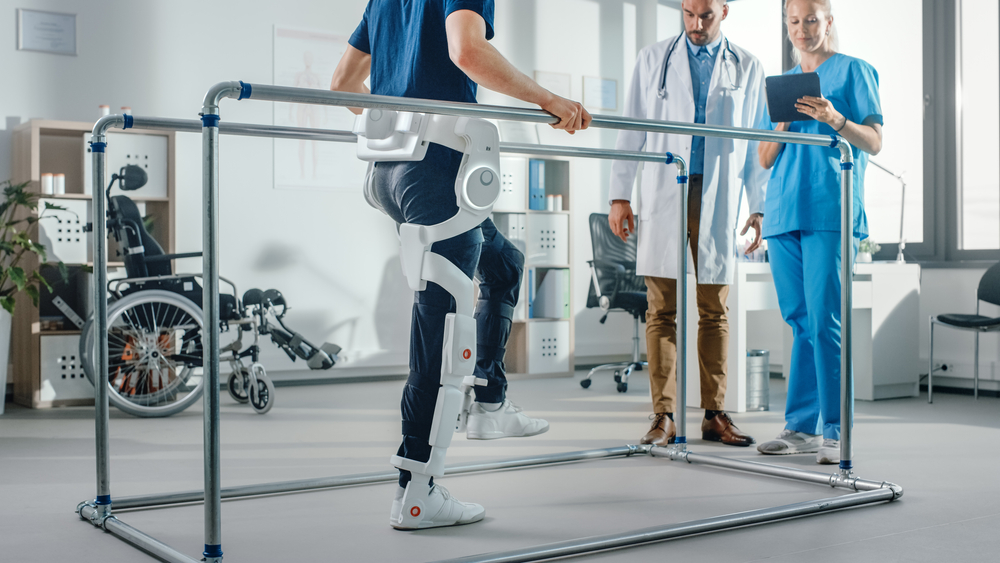Prosthetics and robots may seem like futuristic concepts, but they are actually more accessible than ever before. Prosthetic limbs, robotic arms, and other bionic devices have been used to improve the quality of life of individuals with disabilities or injuries. Owing to advances in technology, scientists are now able to create robots that can help us practically everything from healthcare to manufacturing. In this article, we will explore the world of prosthetics and robots and how they are transforming our lives. We discuss the various types of prosthetics and robots available, their uses in various industries, and their potential implications for our future.
What are Prosthetics?
There are many different types of prosthetics, but all have one common goal: to replace a missing body part. Prosthetics can be as simple as a replacement tooth, or as complex as a complete artificial limb.
Prosthetics is made from a variety of materials, including metals, plastics, and composite materials. They are often custom-made to suit individual users.
Prosthetics can be used for cosmetic purposes, such as hiding a disfigured limb, or for functional purposes, such as aiding the rehabilitation of an injured person. In some cases, prosthetics can be used for both the purposes.
Robotic prosthetics are a relatively new type of prosthetic that are controlled by signals from the user’s brain. These advanced prosthetics can provide greater mobility and independence to users than traditional prosthetics.
What are Robots?
Robots are machines that can be programmed to perform specific sets of tasks. They are typically used in industrial and manufacturing settings to automate repetitive and dangerous tasks. However, robots are increasingly being used in other settings such as healthcare and education.
There are many different types of robots, but they share some common features. All the robots have sensors that allow them to gather information about their surroundings. They also have a control system that enables them to process this information and make decisions on how to move and interact with their environment. Most robots also have an actuator system that allows them to physically manipulate their environment.
Robot use is becoming more widespread as technology continues to develop. Robots offer a number of advantages over human workers, including the ability to work 24 h a day without breaks, greater precision, and increased safety. As technology continues to evolve, it is likely that we will see even more amazing and transformative applications of robots in the future.
How Prosthetics and Robots are Transforming Our Lives
In the last few years, incredible advances have been made in the fields of prosthetics and robotics. These technologies have a profound impact on the lives of people with disabilities as well as on society as a whole.
Prosthetics are artificial limbs that can be used to replace missing limbs. They can be made from a variety of materials, including plastics, metals, and carbon fibers. Prosthetics can be very simple, such as a hand or arm that is controlled by the user’s muscles, or very complex, such as a robotic leg that allows the user to walk and run.
Robots are machines that can be programmed to perform tasks that would otherwise be difficult or impossible for humans to perform. Robots are often used in manufacturing to build products with a high degree of accuracy. Robots are also being increasingly used in healthcare, including in surgery and rehabilitation.
The combination of prosthetics and robots has transformed the lives of people with disabilities in ways that were once unimaginable. For example, people who have lost an arm or leg can now use a robotic prosthetic to regain a certain level of function. In addition, people with paralysis can now use exoskeleton-powered suits to provide mobility and independence.
These technologies are also beginning to have an impact on society as a whole. For example, robot caregivers are being developed to help care for elderly and disabled people. In addition, autonomous cars are being tested
The Future of Prosthetics and Robots
Prosthetics and robots are two of the most cutting-edge technologies currently available, and they show great promise in transforming our lives in the future. Prosthetics are artificial limbs that can be used to replace a lost or damaged body part, whereas robots are machines that can be programmed to perform complex tasks.
Both prosthetics and robots have come a long way in recent years, owing to advances in technology. Today's prosthetics are much more realistic and functional than ever before, and continue to improve every year. Robots are becoming increasingly sophisticated and capable of performing an ever-widening range of tasks.
In the future, these technologies will only become more advanced and widely used. Prosthetics will become even more realistic and effective, eventually becoming indistinguishable from the natural limbs. Robots will become even more versatile and capable, playing an ever-greater role in our lives.
The widespread adoption of prosthetics and robots will have a profound impact on society. They will enable people with disabilities to lead fuller, richer lives and transform the way we live, work, and play.




